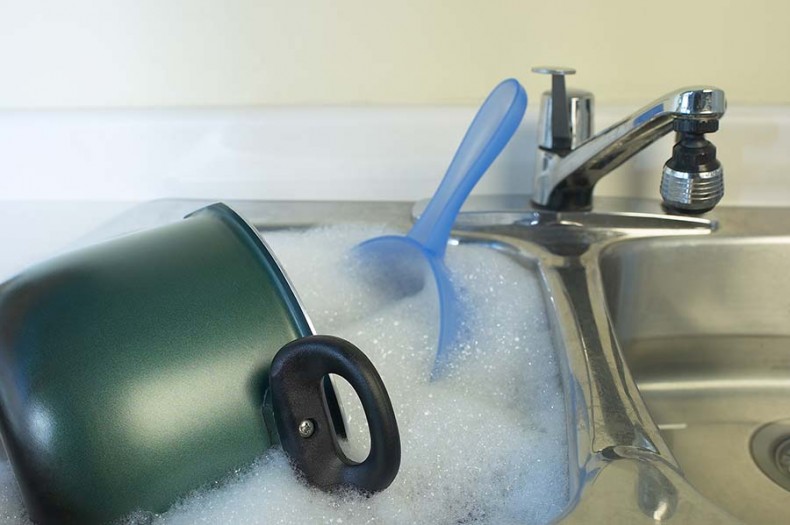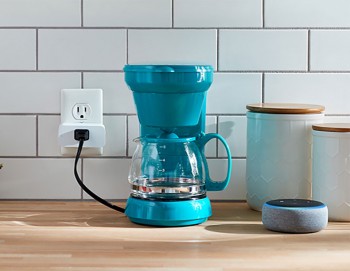Saving Hot Water in the Kitchen
By Hannah McKenzie
Q: Last month, you suggested evaluating my home’s hot water system when selecting a new water heater — this being a path to using less hot water and energy. What control do I have over my hot water system?
A: We have more control over our hot water systems than most people think. The amount of hot water used by appliances (dishwasher and clothes washer) and plumbing fixtures (sinks and showers) is determined by the particular model and how we use it. Due to the abundance of opportunities for savings, we will tackle only the dishwasher and the kitchen sink in this installment.
The strides towards improving the energy efficiency of appliances in the last few decades are astounding. Prior to 1994, most dishwashers used between 8 to 14 gallons of hot water per cycle. This is approximately the same amount of water held by two 5-gallon buckets, which is an alarming amount! Handwashing dishes was likely an energy saving practice in homes with these older dinosaur dishwashers.
Today, federal standards require no more than 5 gallons per cycle. Dishwashers that are ENERGY STAR® certified, which requires better cleaning performance and lower energy/water consumption, use no more than 4.25 gallons per cycle and some use as little as 2.0 gallons. It is difficult to fathom handwashing a full dishwasher load of dishes with only two gallons of water. Maybe some people could hand wash that many dishes with five gallons of water, but I’d much rather spend the time reading books to my son or puttering around in my garden and let a machine wash dishes for me. Using a modern and preferably ENERGY STAR dishwasher will nearly always use less hot water and energy than handwashing.
Habits also impact the amount of hot water and energy used by dishwashers and kitchen sinks. Here are a few no-cost ways to save:
- Scrape, don’t rinse. A rubber spatula does wonders removing food residue. Furthermore, the majority of dishwashers are capable of thoroughly cleaning unrinsed dishes.
- Soak, don’t shower. When running water to rinse food and dishes, keep in mind that every minute the sink faucet runs is typically 2.5 gallons of water going down the drain. Instead soak food or dishes in the sink basin or a dishpan.
- Load it up. Partial and full dishwasher loads use the same amount of water. Follow manufacturer instructions to avoid over- or under-filling the racks. If it takes more than two or three days to fill the dishwasher, use a “rinse and hold” setting in between “normal loads” to help save time and money, instead of rinsing by hand.
- Use energy saving settings. Dishwasher manuals often hold important information about “eco” settings that may further increase efficiency and dollar savings. Skip the heat dry cycle.
- Water heater temperature. Since the early 1990’s most dishwashers in the U.S. have been sold with built-in heaters to boost water temperatures to 140°F. Set the water heater temperature to 120°F (typically between low and medium on the temperature dial) and the dishwasher will adjust itself if needed.
-
Share this story:




